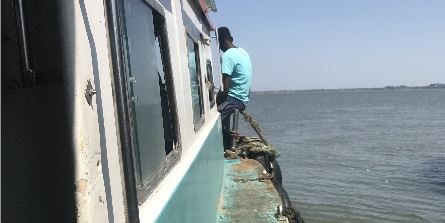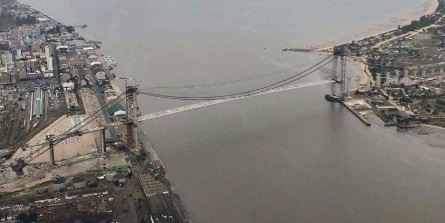The longest suspension bridge in Africa is under construction in Mozambique. It will link the capital Maputo with the Catembe district and dramatically reduce travel times between the capital and some of the country’s tourism destinations.
Dean Swanepoel, Quality Manager and Senior Materials Engineer at Gauff Engineering, who is overseeing the project, told Tourism Update the bridge was expected to open for the Independence Day celebration on June 25, 2018.

Currently, when travelling between Maputo and Catembe, a ferry is the only way to cross but it frequently breaks down, causing delays. Swanepoel said completion of the bridge would provide a shorter, safer and more comfortable journey.
Two main roads are also under construction. One, measuring 120km, will link Catembe to Ponta do Ouro; the other, measuring 65km, goes to Bela Vista, which is half way between Catembe and Ponta do Ouro.
Nikki Wiedemann, Sales and Marketing Manager at White Pearl, Mozambique said: “The anticipated completion of both the bridge and road will cut the travel time between the capital and our resort by more than half, making White Pearl more easily accessible.”
She told Tourism Update that currently guests have to take the ferry from Maputo to Catembe, followed by a three-hour road transfer to the resort. Alternatively, they can opt for a 30-minute helicopter transfer from Maputo International to the resort, which often excludes more budget-conscious guests from getting to White Pearl.
“Coupled with the rolling-out of the new tourist visas on arrival by the Mozambican government this year, this is another stride toward enhancing the ease of access and attracting tourists to this part of the country,” concludes Wiedemann.

Swanepoel anticipates that the bridge will promote the development of eco-tourism in southern Mozambique, as a result of more streamlined access to some of the country’s most scenic spots, along with decreased traffic congestion around these areas.
“Construction of this project will generate extensive and far-reaching impact on the development of tourism in Mozambique,” concludes Swanepoel.
The bridge was funded by the Export-Import Bank of China (EXIM Bank) and the Mozambique government, costing around $725 million, and implemented by the Empresa de Desenvolvimento de Maputo Sul (EDMS).
The underdeveloped Catembe district will also undergo an urbanisation project that consists of 13 separate units of 10 000 hectares, which will be divided into residential, commercial, industrial, logistical, tourism and green areas.
























